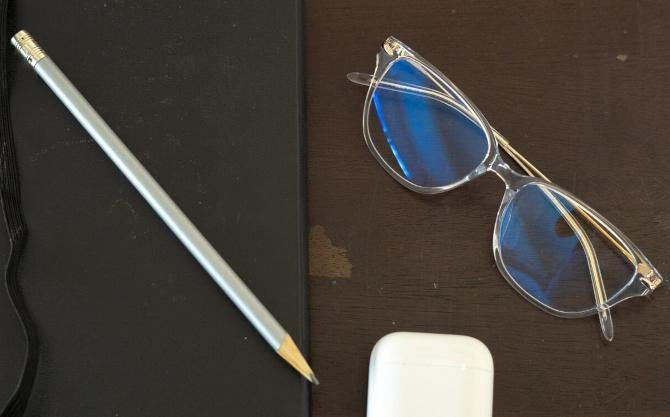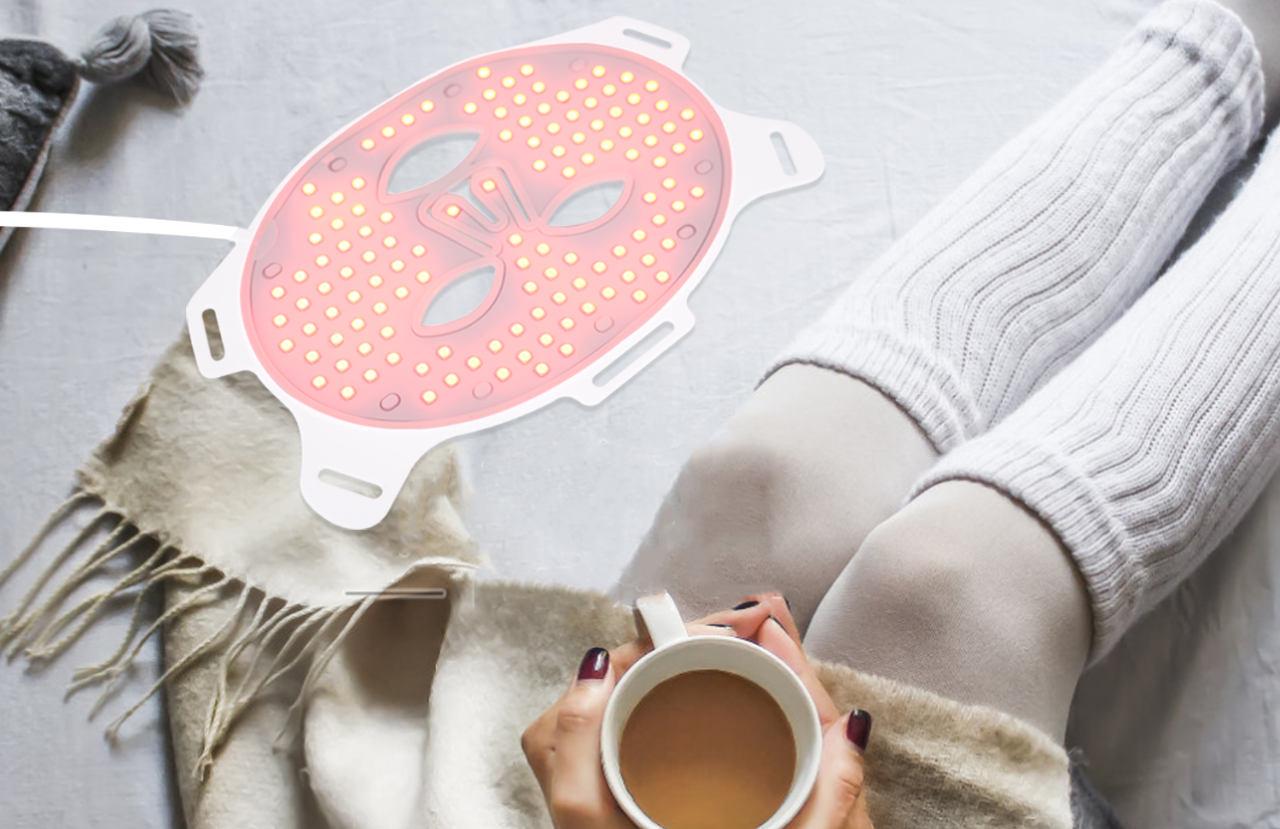You may have considered buying a protective pair of glasses to wear when using your digital devices. But you probably took a step back when you came across all the confusing terms and different styles in the protective eyewear industry. What are computer glasses, blue light glasses, tinted glasses, anti-glare and blue cut? What is blue light, green light and violet light? Why do you need protection from different colours of light anyway? What do manufacturers mean when they say their glasses protect you from different wavelengths?
We’ll cover all of that in this article and explain in detail the difference between computer glasses / computer screen glasses, blue light glasses so you can make an educated choice on which pair you need!
What are computer glasses / computer screen glasses?
Computer glasses aka computer screen glasses are exactly what they read- glasses that protect your eyes from computer screens and digital devices. Nonetheless, how they do this and how effective they depend on the manufacturer.
Computer screen glasses are created with the primary purpose of reducing digital eye strain. Digital eye strain (also called Computer Vision Syndrome) are eye and vision-related problems that arise from looking at digital screens for long periods.
Symptoms include;
- Blurred vision
- Watery eyes,
- Headaches
- Dry eyes and
- Fatigue, to name a few
We’ve become reliant on computer screens for work, recreation, and socialisation and reports show that adults spend above 10 hours a day on average absorbing light from different sources. And these studies were conducted pre-Corona.
Recent studies conducted in July this year show that increased screen-time, coupled with limited outdoor activities during lockdown is worsening the onset and progression of myopia (near-sightedness). Especially for children, the dependence on digital devices could have long-term effects on their development. Although children can inherit the tendency for Myopia, its causes are mainly developmental. Therefore it’s imperative that we limit both our own and our children’s screen time to protect our eyes and health.
The interesting thing to note is that it’s not only our digital devices (laptops, mobile and tablets) that can harm our eyes. Blue light from seemingly harmless sources such as indoor lighting, street lamps and billboards is also absorbed by our eyes and the skin and is responsible for damage.
Although we all try to reduce our exposure to screens, this can be difficult when we’re dependent on them for all of our activities. One trick to reduce damage is the 20-20-20 rule. You set a timer for 20 minutes and when it goes off, you spend at least 20 seconds looking at something 20 feet away. This does help, but it’s not enough. Work should never be at the expense of health and well-being. Using a quality pair of computer glasses coupled with good screen-habits the best method to protect your eyes and health.
How do computer glasses work?
Since there’s no standardization in the protective eyewear industry, ‘computer glasses’ could refer to anything from a simple anti-glare coating to a full blue-light filter.
Let us get one thing straight- computer screen glasses that do not filter blue light are useless. This is because the primary damage to the eyes comes from blue light (wavelength: 400nm-495nm). This range includes blue light and turquoise light, although it's commonly referred to as ‘blue light.’ It carries more energy than all other wavelengths and is responsible for digital eye strain, disturbing our sleep-wake cycle, headaches and retina damage.
There are glasses manufacturers who sell computer screen glasses that lack blue-light blocking characteristics but have other features such as anti-glare, slight magnification and de-centered pupillary distance. Still, these features come secondary to the protection offered by a blue light filter.
The top 2 features that computer screen glasses must have to be effective are;
A blue light filter:
Glasses that have a blue light filter are also called ‘blue-cut’. Simply having any level of protection from blue light is not enough. For a blue light filter to be effective, it must protect your eyes from the entire range of wavelengths (400nm to 495 nm). The peak wavelength of blue light is 440-455 so the glasses must offer protection against this range.
Anti-glare coating:
Light-giving devices cast reflections onto your glasses which causes reflections to build up. Even though you may not notice (because you’re accustomed to them), your eyes and brain are continuously working to see past those reflections. This tires your eyes out. An anti-glare coating reduces glare and allows more light to pass through, thus giving you clearer vision.
What to look for when buying computer screen glasses:
- Make sure they are blue-cut (offer blue light protection). They must offer protection against the full range of damaging wavelengths (400-495 nm) to be effective. The lenses for daytime should be CLEAR
- Check for anti-glare coating
- Check for spectral test reports on the website. If there are no test reports or specifications mentioned, it’s possible that they are filtering as low as 5% of blue light!
Computer glasses that are built for the daytime are clear. They do not block 100% of blue light (to do this, they would have to be red-tinted). Instead, they should offer at least 50% of protection against the entire spectrum of blue light. (400-495 nm)
This is because blue light in natural quantities during the day is healthy; it's only the excessive blue light from digital devices that needs to be filtered out.
Our ScreenTime Blue Light Computer Glasses filter blue light by 50% across the entire blue light spectrum (400nm-495nm). This means that your eyes are safe from the peak wavelength which causes the most damage.
As we said before, there’s no standardisation in the industry so it’s important you check reviews and the reputation of the seller, so you know the glasses you are buying will actually benefit your eyes.
What are blue light glasses?
Blue light glasses are of two types;
- For daytime use (as discussed above- they’re also called computer glasses),or
- Tinted for evening and night-time use.
The night-time blue light glasses have an orange or red tint to block blue light rays completely and they are made to be used after sundown. After sunset, humans are not naturally supposed to be exposed to any amount of blue light. Even the slightest exposure activates the retinal cells in our eyes and stops the production of melatonin. Melatonin is the hormone responsible for promoting a night of deep and restful sleep.
Continuous exposure to blue light after sundown can disturb the sleep-wake cycle and make it difficult to fall asleep in the long run. Tinted lenses mimic the conditions of nature by blocking all artificial blue light and regulating a normal sleep-wake cycle, thus promoting good eye-health and sleep.
What to look for when buying blue light blocking glasses for nighttime:
- They should block 100% of blue light and 100% of green light up to 550nm
- Simply a tinted lens is not enough- check for spectral test reports for proof of the claims
In our range of glasses to be used after sundown, we created nocturnal red lenses such as the NightFall Blue Light glasses which blocks 100% of blue light and 100% of green light across the entire spectrum of damaging wavelengths. This makes sure that you are protected from all levels of light which signal to the brain that it is daytime.
Conclusion:
‘Computer screen glasses’ are a colloquial term used to refer to any type of glasses which are meant to be used with screens and digital devices. They could have characteristics such as anti-glare coating, magnification, tint etc.
When buying glasses for computer use, having a blue light filter in your glasses is a must. Blue light-blocking glasses (also called blue-cut) are effective only when they provide some degree of protection against the entire spectrum of blue light.
Blue light glasses for daytime are clear and they provide protection from computer screens. Hence they can be called computer glasses.
Blue light blocking glasses for nighttime are tinted and they should block 100% of blue light and 100% of green light across the entire spectrum to be effective in promoting sleep.
References:
Kimberly, B., & James R., P. (2009). AMBER LENSES TO BLOCK BLUE LIGHT AND IMPROVE SLEEP: A RANDOMIZED TRIAL. Chronobiology International, 26(8), 1602-1612. doi: 10.3109/07420520903523719
Publishing, H. (2020). Blue light has a dark side - Harvard Health. Retrieved 30 December 2020, from https://www.health.harvard.edu/staying-healthy/blue-light-has-a-dark-side
The Total Audience Report: Q1 2016. (2020). Retrieved 30 December 2020, from http://www.nielsen.com/us/en/insights/reports/2016/the-total-audience-report-q1-2016.html?afflt=ntrt15340001&afflt_uid=r-fV87sU08Q.khI2x04m1JtwlhYOYToM6Eb63MvODqZQ&afflt_uid_2=AFFLT_ID_2
Wai WONG, C., TSAI, A., Jonas, J., Ohno-Matsui, K., CHEN, J., ANG, M., & Wei TING, D. (2020). Digital Screen Time During COVID-19 Pandemic: Risk for a Further Myopia Boom?. American Journal Of Ophthalmology. doi: 10.1016/j.ajo.2020.07.034







